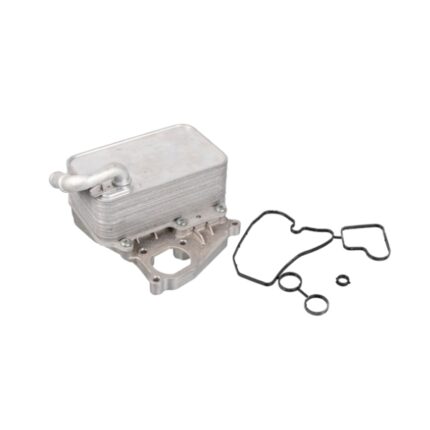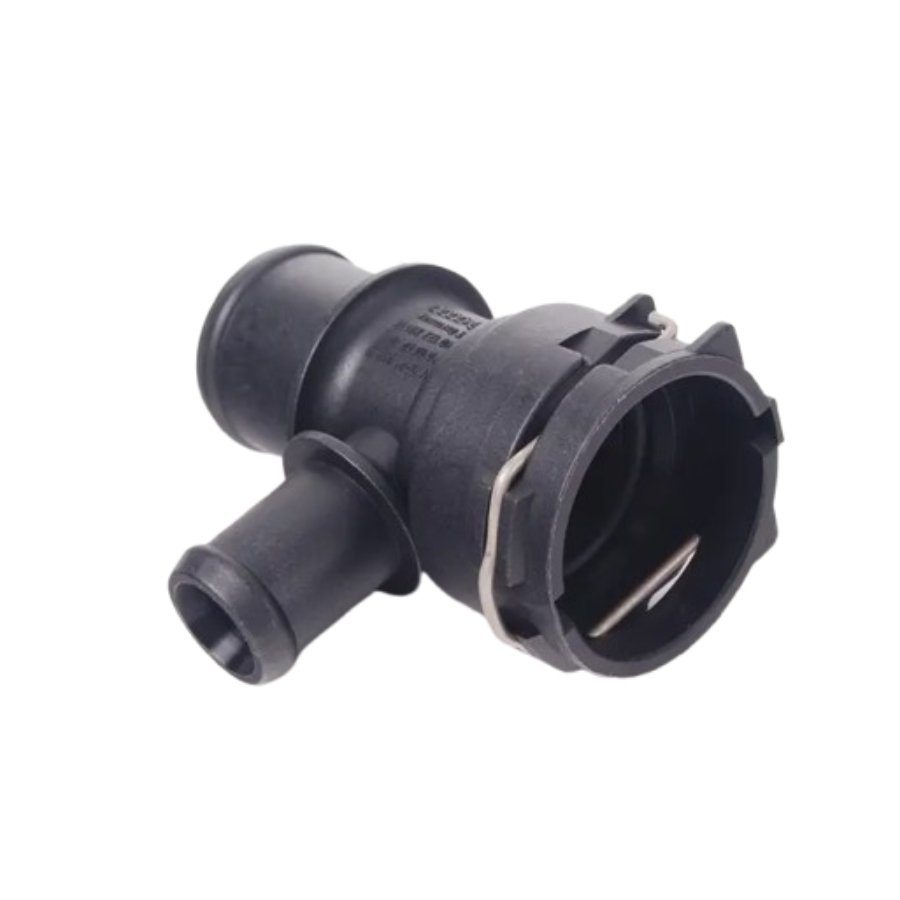Get Volkswagen Passat B6 FWD 2.0T Quick Coupling Piece 1K0122291M in Kenya
Quick coupling pieces are essential components used in various industries, including automotive, hydraulic, pneumatic, and manufacturing applications. They allow for rapid and efficient connection and disconnection of hoses, pipes, or other equipment without the need for tools, which significantly enhances operational efficiency and flexibility. Understanding the functions, benefits, common applications, and maintenance practices related to quick coupling pieces is crucial for anyone working with fluid transfer systems.
Functions of Quick Coupling Pieces
- Rapid Connection and Disconnection: The primary function of a quick coupling piece is to provide a mechanism for fast and easy connection and disconnection of hoses or pipes. This allows for quick changes between different equipment or configurations without the need for tools, saving valuable time in industrial and automotive applications.
- Leak Prevention: Quick couplings are designed to create a tight seal when connected, preventing leaks during fluid transfer. Many models feature built-in sealing mechanisms, such as O-rings or gaskets, that ensure a secure connection and minimize the risk of spills or contamination.
- Pressure Resistance: Quick coupling pieces are engineered to withstand high pressures typically found in hydraulic and pneumatic systems. They maintain structural integrity under pressure, ensuring safe and reliable operation in demanding environments.
- Versatility: Quick coupling pieces come in various designs and sizes, allowing for compatibility with different hose types and fittings. This versatility makes them suitable for a wide range of applications, from simple garden hoses to complex industrial machinery.
- Fluid Type Compatibility: Many quick couplings are designed to handle various fluids, including water, oils, and gases. Specialized materials and sealing technologies allow them to function effectively with different media, making them essential in diverse industries.
Types of Quick Coupling Pieces
- Hydraulic Quick Couplings: These couplings are specifically designed for hydraulic applications, allowing for quick connection and disconnection of hydraulic hoses. They are built to withstand high pressure and are commonly used in construction and agricultural machinery.
- Pneumatic Quick Couplings: Used in compressed air systems, pneumatic quick couplings enable rapid connection and disconnection of air hoses. They often feature a one-handed operation mechanism, making them user-friendly for various applications.
- Self-Sealing Couplings: These couplings automatically seal when disconnected, preventing leaks and spills. They are commonly used in applications where fluid loss must be minimized, such as fuel transfer and chemical handling.
- Push-to-Connect Couplings: These couplings allow users to connect hoses by simply pushing them into the coupling. They are often used in low-pressure applications and provide a convenient and efficient solution for quick connections.
- Non-Spill Couplings: Non-spill couplings are designed to minimize fluid loss during disconnection. They feature a valve mechanism that seals off the fluid flow when disconnected, making them ideal for applications where spillage is a concern.
Benefits of Quick Coupling Pieces
- Increased Efficiency: Quick coupling pieces streamline operations by allowing for rapid connection and disconnection of equipment. This efficiency reduces downtime and enhances productivity in various industrial settings.
- Improved Safety: By facilitating quick and secure connections, quick couplings help prevent accidents related to leaks or spills. Their design often incorporates safety features that reduce the risk of accidental disconnection under pressure.
- Cost-Effective: The use of quick couplings can lead to cost savings by minimizing fluid loss and reducing the need for specialized tools or equipment. Their ability to speed up processes can also result in lower labor costs.
- Ease of Use: Many quick coupling designs are user-friendly, allowing operators to make connections with minimal effort. This ease of use is especially beneficial in environments where operators may need to make frequent changes or adjustments.
- Enhanced Maintenance: Quick couplings simplify maintenance tasks by allowing for easy removal and replacement of hoses or pipes. This convenience can help keep systems operating smoothly and minimize the time spent on maintenance.
Common Applications of Quick Coupling Pieces
- Automotive: In the automotive industry, quick couplings are commonly used for fuel lines, air conditioning systems, and hydraulic brake lines. Their ability to facilitate quick connections makes them essential in vehicle assembly and repair.
- Construction and Agriculture: Quick coupling pieces are widely used in hydraulic equipment, such as excavators, tractors, and forklifts. They enable operators to quickly connect hydraulic hoses for various attachments, improving versatility and productivity.
- Manufacturing: In manufacturing settings, quick couplings are used in pneumatic systems for tools and machinery. They allow for easy switching between different tools or equipment, enhancing operational efficiency.
- Chemical Processing: Quick couplings are employed in chemical handling applications to ensure safe and efficient transfer of various fluids. Their sealing mechanisms help prevent leaks and spills, protecting both operators and the environment.
- HVAC Systems: In heating, ventilation, and air conditioning (HVAC) systems, quick couplings are used for refrigerant lines and drain hoses. They facilitate maintenance and servicing, allowing technicians to quickly disconnect and reconnect components.
Symptoms of a Failing Quick Coupling Piece
- Fluid Leaks: One of the most apparent signs of a failing quick coupling is fluid leakage at the connection point. This can indicate a damaged seal or improper connection, which should be addressed immediately to prevent further issues.
- Difficulty Connecting or Disconnecting: If a quick coupling is difficult to connect or disconnect, it may be a sign of wear or damage. This can lead to frustration for operators and may indicate that the coupling needs to be replaced.
- Unusual Noises: Hissing or bubbling noises during operation may indicate that air or fluid is escaping from a compromised coupling. This can signify a problem that requires immediate attention to avoid system failures.
- Decreased Performance: A malfunctioning quick coupling can lead to reduced fluid flow, affecting overall system performance. If equipment is not operating at optimal levels, it may be necessary to inspect the coupling for issues.
- Visible Damage: Cracks, dents, or corrosion on the coupling can indicate that it has reached the end of its service life. Regular inspections should include checking for visible damage that may compromise the coupling’s performance.
Maintenance of Quick Coupling Pieces
- Regular Inspections: Conduct routine inspections of quick coupling pieces to identify any signs of wear, damage, or leaks. Regular checks can help detect issues before they escalate, ensuring safe and reliable operation.
- Cleanliness: Keep quick couplings clean and free from debris. Contaminants can affect the sealing surfaces and lead to leaks. Wipe the coupling surfaces before connecting to ensure a proper seal.
- Proper Storage: When not in use, store quick coupling pieces in a clean, dry environment to prevent damage and contamination. Proper storage can extend the lifespan of the couplings and maintain their effectiveness.
- Lubrication: Depending on the design, applying appropriate lubricants to the O-rings or sealing surfaces can help maintain their flexibility and effectiveness. Consult the manufacturer’s guidelines for recommended lubricants.
- Replacement as Needed: If a quick coupling shows signs of significant wear or damage, replace it promptly. Using a compromised coupling can lead to leaks and system failures, compromising safety and efficiency.
Conclusion
In conclusion, quick coupling pieces are indispensable components in various industries, facilitating rapid connection and disconnection of hoses and pipes. Their primary functions include preventing leaks, withstanding pressure, and providing versatility in different applications. The benefits of using quick couplings extend to increased efficiency, improved safety, and cost-effectiveness. Regular maintenance and prompt attention to symptoms of failure are crucial for ensuring the reliable operation of quick couplings. By understanding their importance and maintaining them properly, vehicle owners and industrial operators can enhance productivity, ensure safety, and optimize performance across a wide range of applications.
Follow us on Facebook for more parts.





Reviews
Clear filtersThere are no reviews yet.